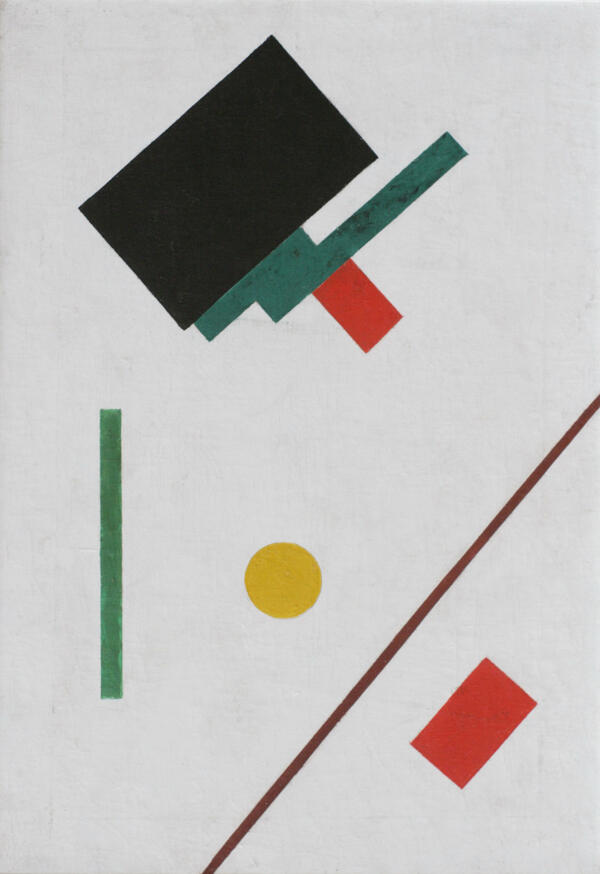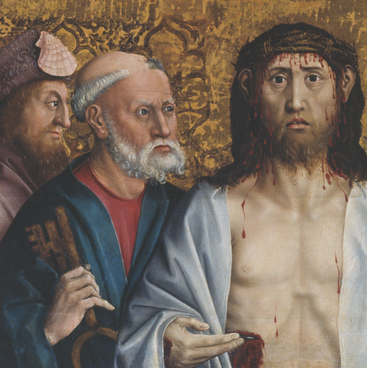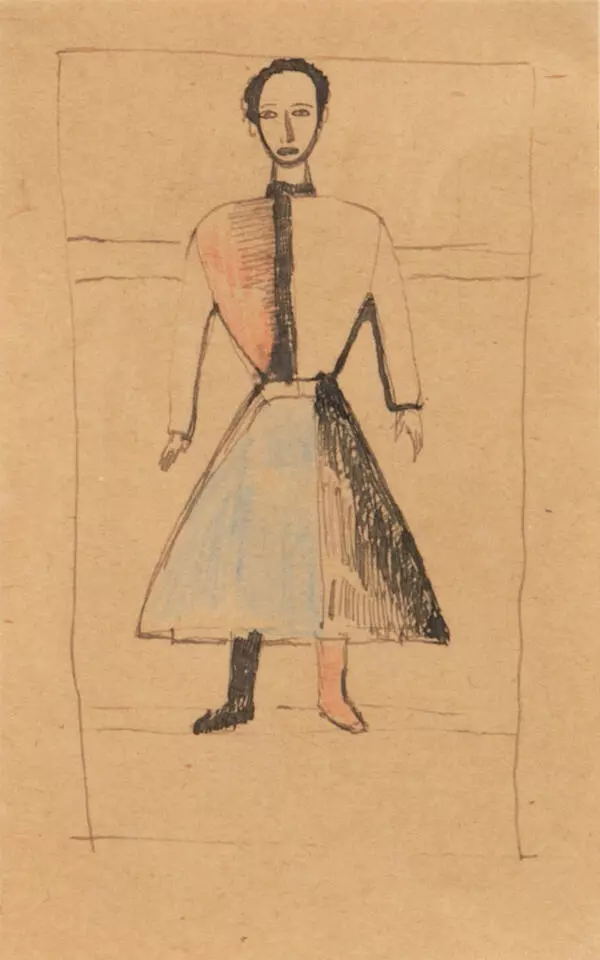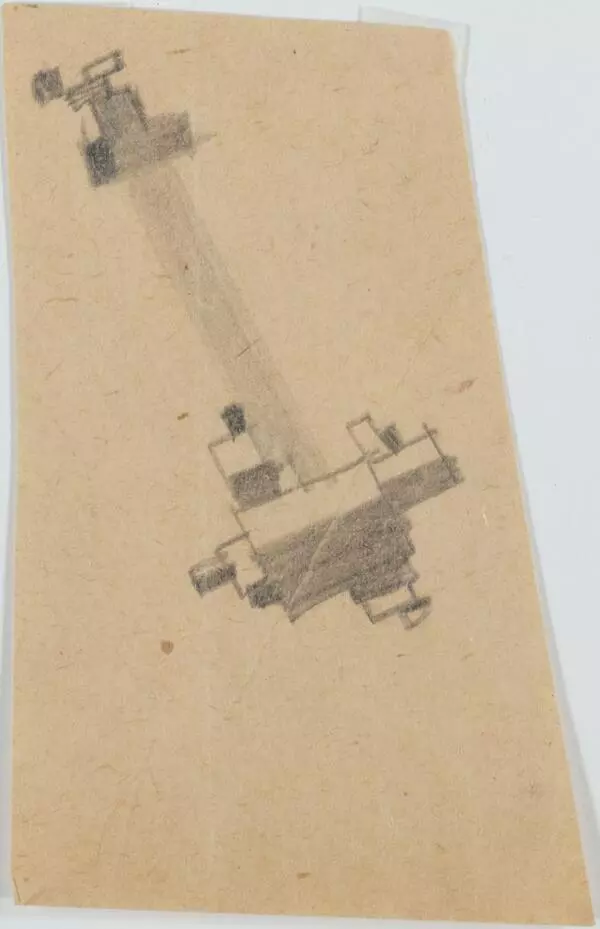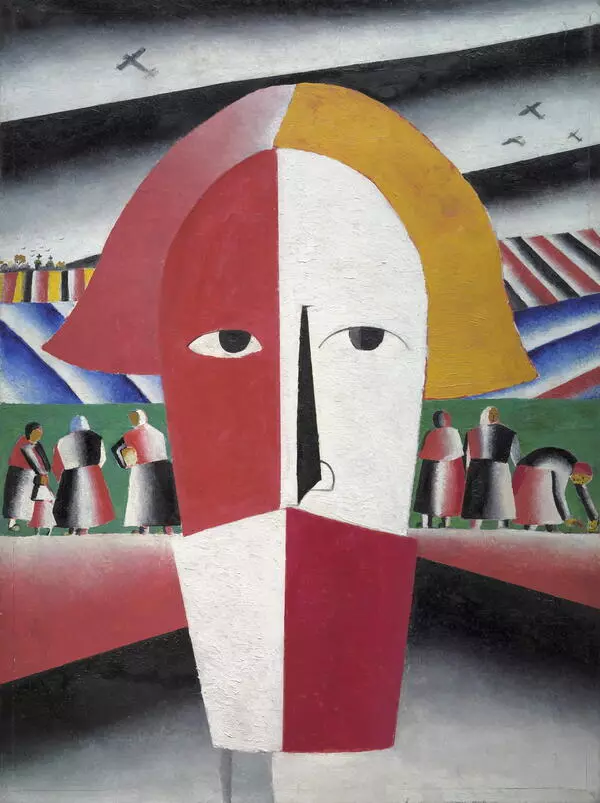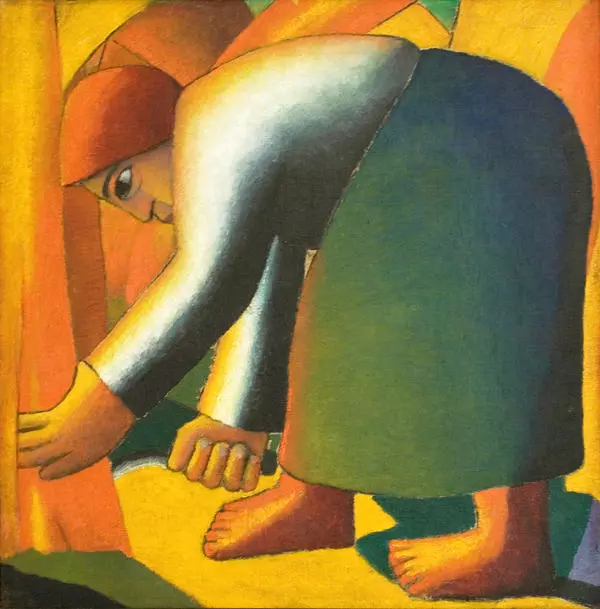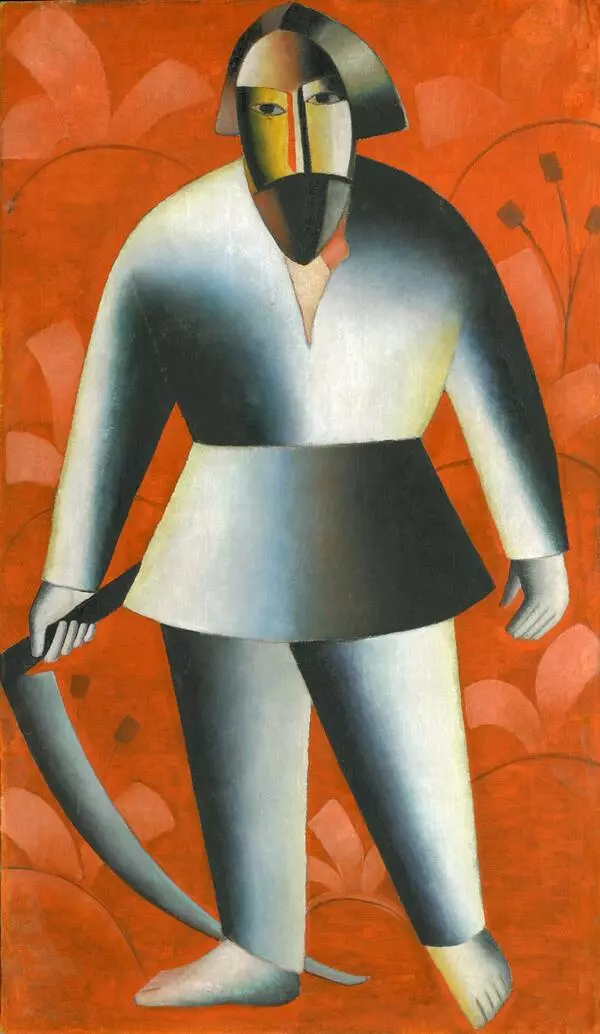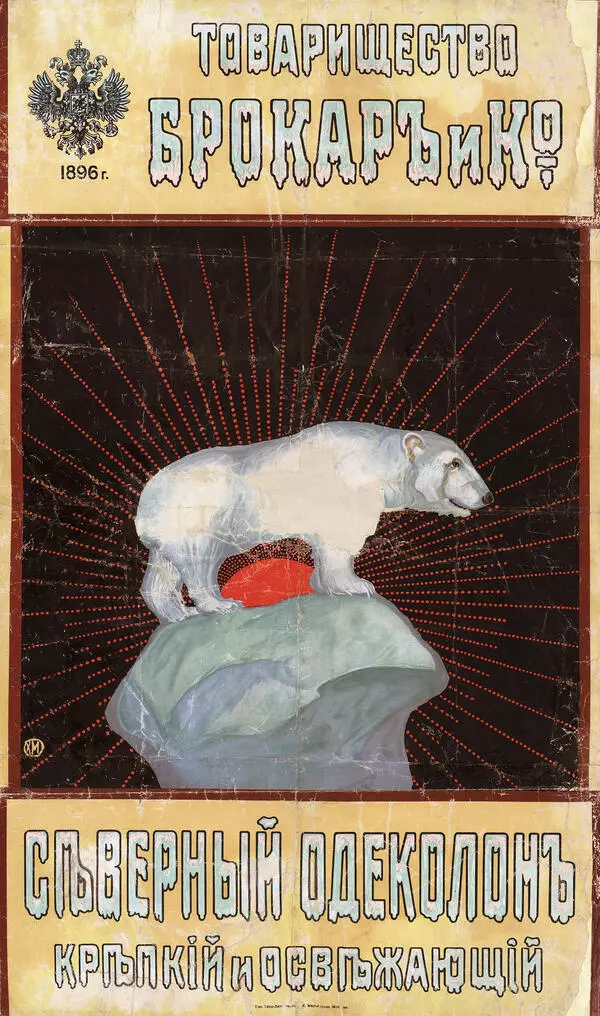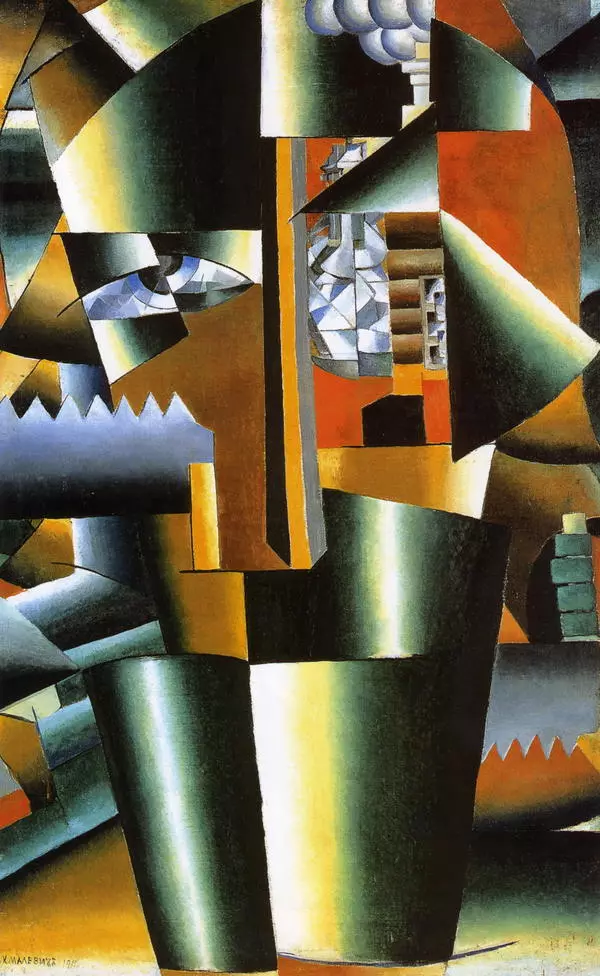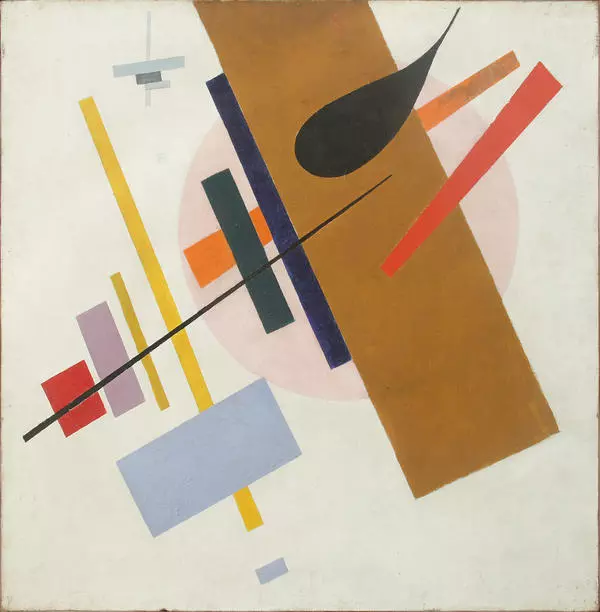Kazimir Malevich is an outstanding Russian artist, teacher, art theorist, and philosopher. His work continues to cause controversy. ‘Like or dislike — art does not ask you about it, as it did not ask when it created stars in the sky, ” wrote the artist.
The ultimate expression of the creative path of the master was the creation and theoretical justification of suprematism — the abstract direction of painting in the 1910s. According to Kazimir Malevich, suprematism, from Latin supremus (a highest), was the liberation of painting and art, in general, from all subordination, rejection of domination of any ideology over art. There is no narrative in suprematism, “autotelic pictorial forms” levitate above the content and things.
The “Suprematic Composition” painting from the Tula Museum of Fine Arts collection is the same age as the legendary “Black Square”. Both canvases were created in 1915. At this time, the most significant events in Malevich’s creative biography took place: the exhibition ‘0.10’ and the manifesto ‘From Cubism and Futurism to Suprematism. The New Painterly Realism’.
In ‘Suprematic Composition, ” colored geometric objects exist in dynamic interaction. These figures are prototypes of all forms in the real world. They levitate in a white airless space symbolizing the infinite universe. There is no plot in the picture, there are no usual standing points — top and bottom, but there is a different reality created by the artist, in which the laws of suprematic gravitation operate. It’s an ideal universe.
The black rectangle in the ‘Suprematic Composition’ can be a repercussion of the ‘great’ black square — a basic form, a suprematic ‘cell, ” as Malevich called it himself. He believed that a new art would form a new man who carried the mysteries of the cosmos and the universe, and the artist would help to express his individuality and creative ego.
The canvas entered the museum collection from Tula Art and Industrial College in 1926 when pioneers of the avant-garde were declared formalists and enemies of the Soviet art. So, the avant-garde creations settled in the museum reserves were saved from destruction and sales abroad.
The ultimate expression of the creative path of the master was the creation and theoretical justification of suprematism — the abstract direction of painting in the 1910s. According to Kazimir Malevich, suprematism, from Latin supremus (a highest), was the liberation of painting and art, in general, from all subordination, rejection of domination of any ideology over art. There is no narrative in suprematism, “autotelic pictorial forms” levitate above the content and things.
The “Suprematic Composition” painting from the Tula Museum of Fine Arts collection is the same age as the legendary “Black Square”. Both canvases were created in 1915. At this time, the most significant events in Malevich’s creative biography took place: the exhibition ‘0.10’ and the manifesto ‘From Cubism and Futurism to Suprematism. The New Painterly Realism’.
In ‘Suprematic Composition, ” colored geometric objects exist in dynamic interaction. These figures are prototypes of all forms in the real world. They levitate in a white airless space symbolizing the infinite universe. There is no plot in the picture, there are no usual standing points — top and bottom, but there is a different reality created by the artist, in which the laws of suprematic gravitation operate. It’s an ideal universe.
The black rectangle in the ‘Suprematic Composition’ can be a repercussion of the ‘great’ black square — a basic form, a suprematic ‘cell, ” as Malevich called it himself. He believed that a new art would form a new man who carried the mysteries of the cosmos and the universe, and the artist would help to express his individuality and creative ego.
The canvas entered the museum collection from Tula Art and Industrial College in 1926 when pioneers of the avant-garde were declared formalists and enemies of the Soviet art. So, the avant-garde creations settled in the museum reserves were saved from destruction and sales abroad.

